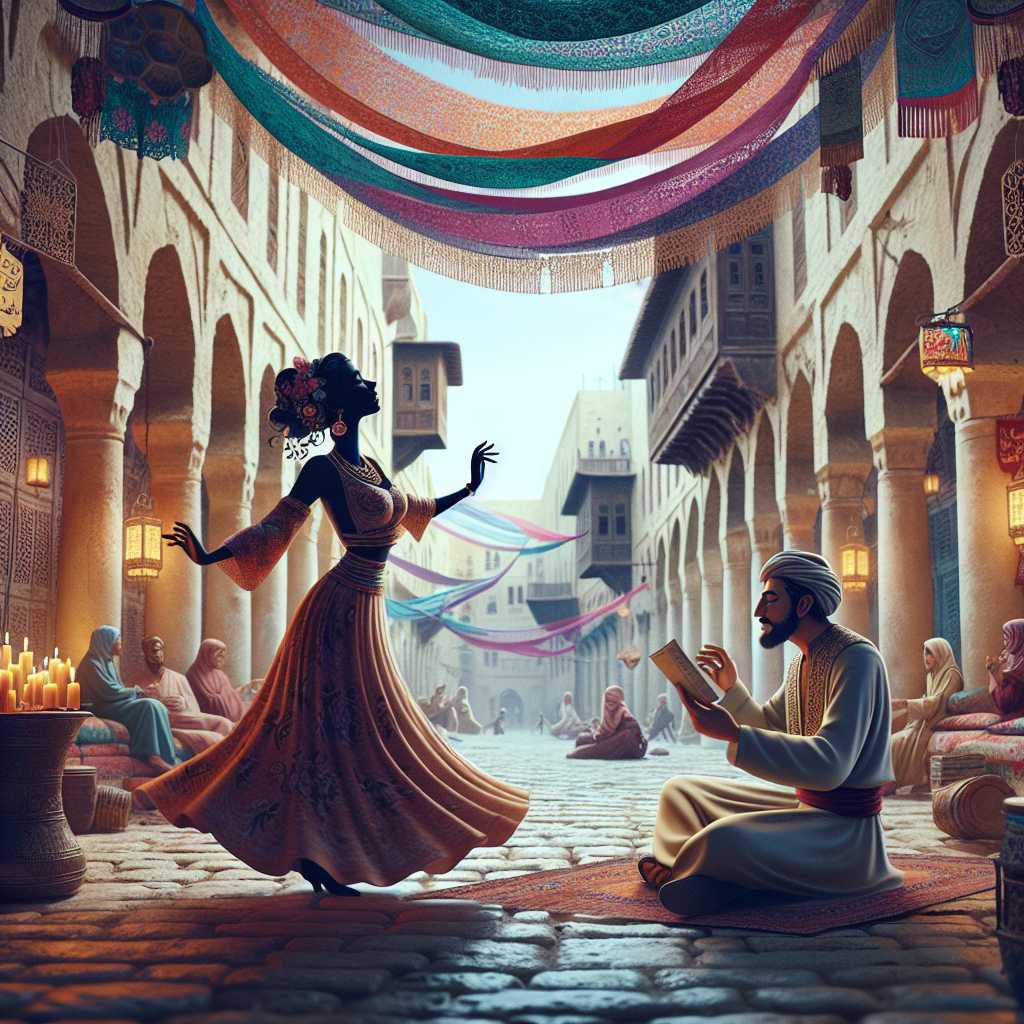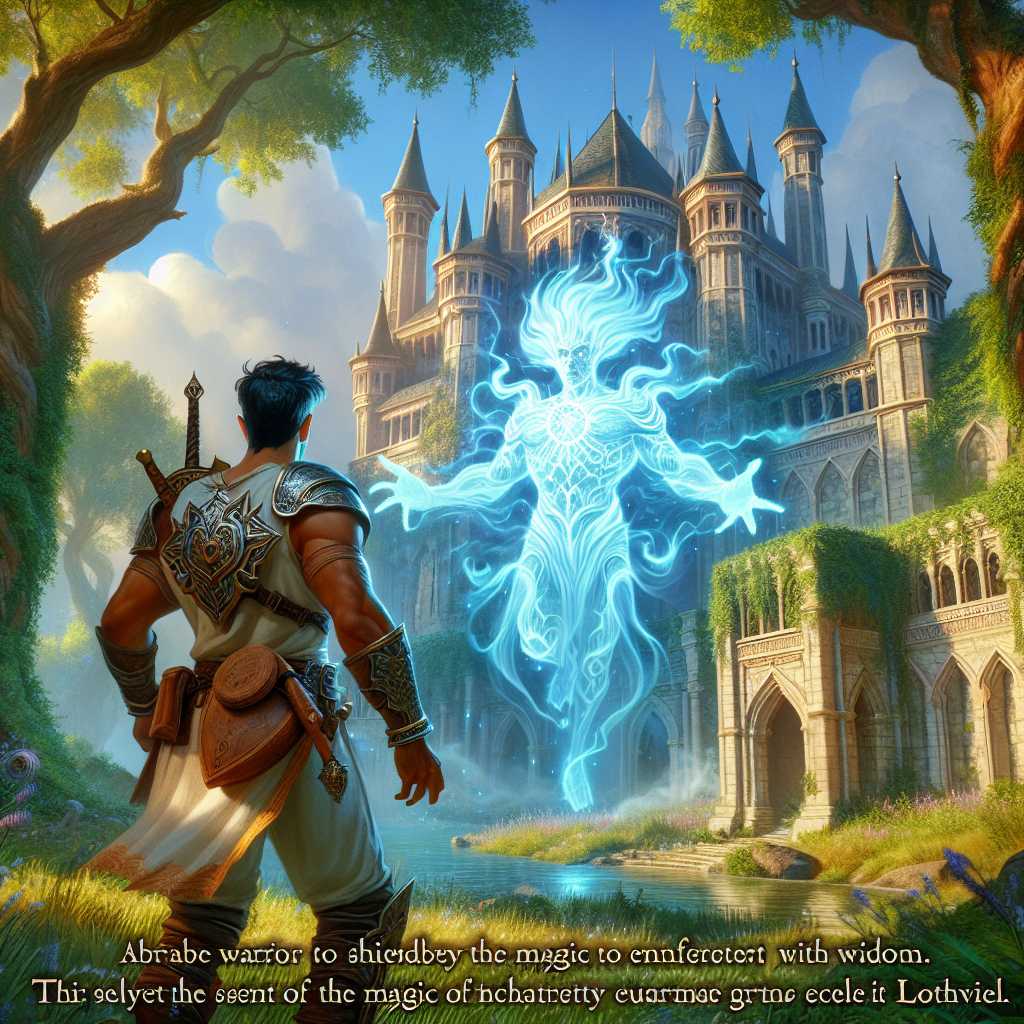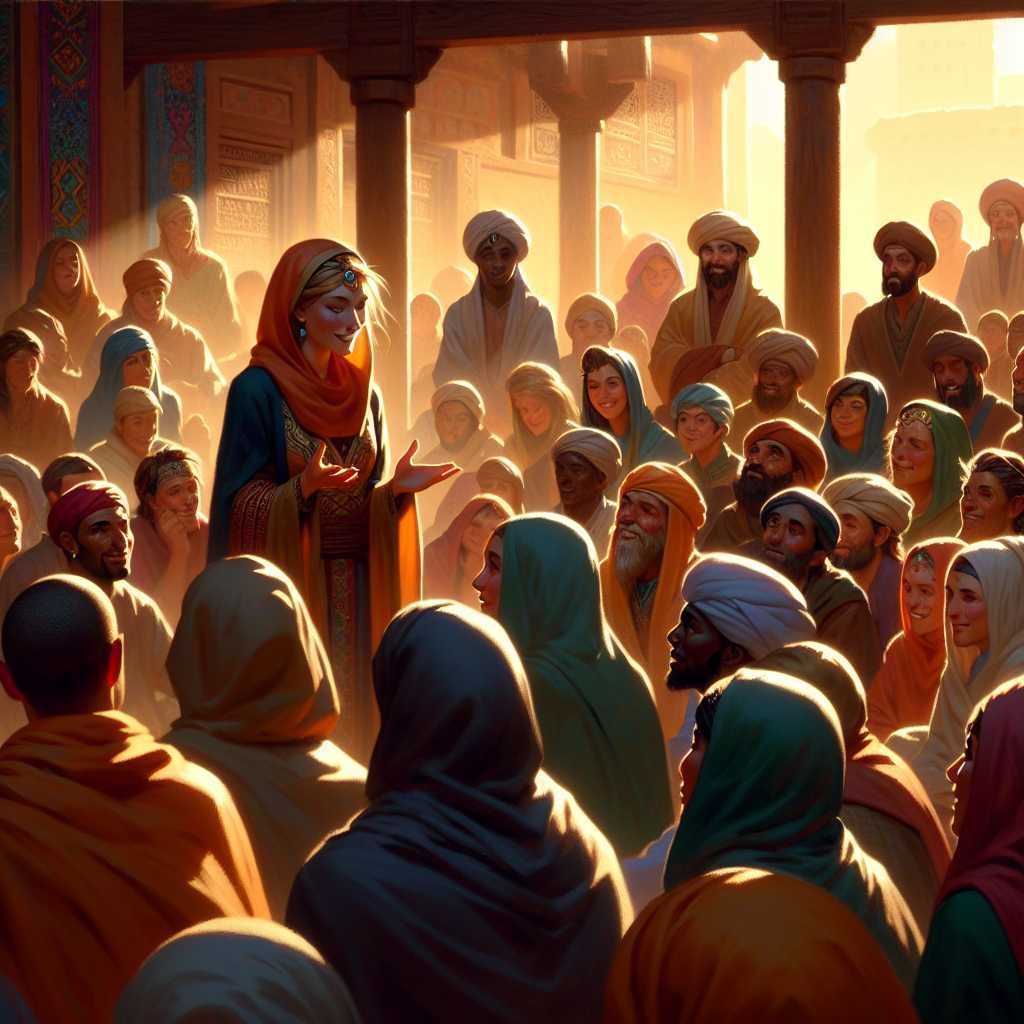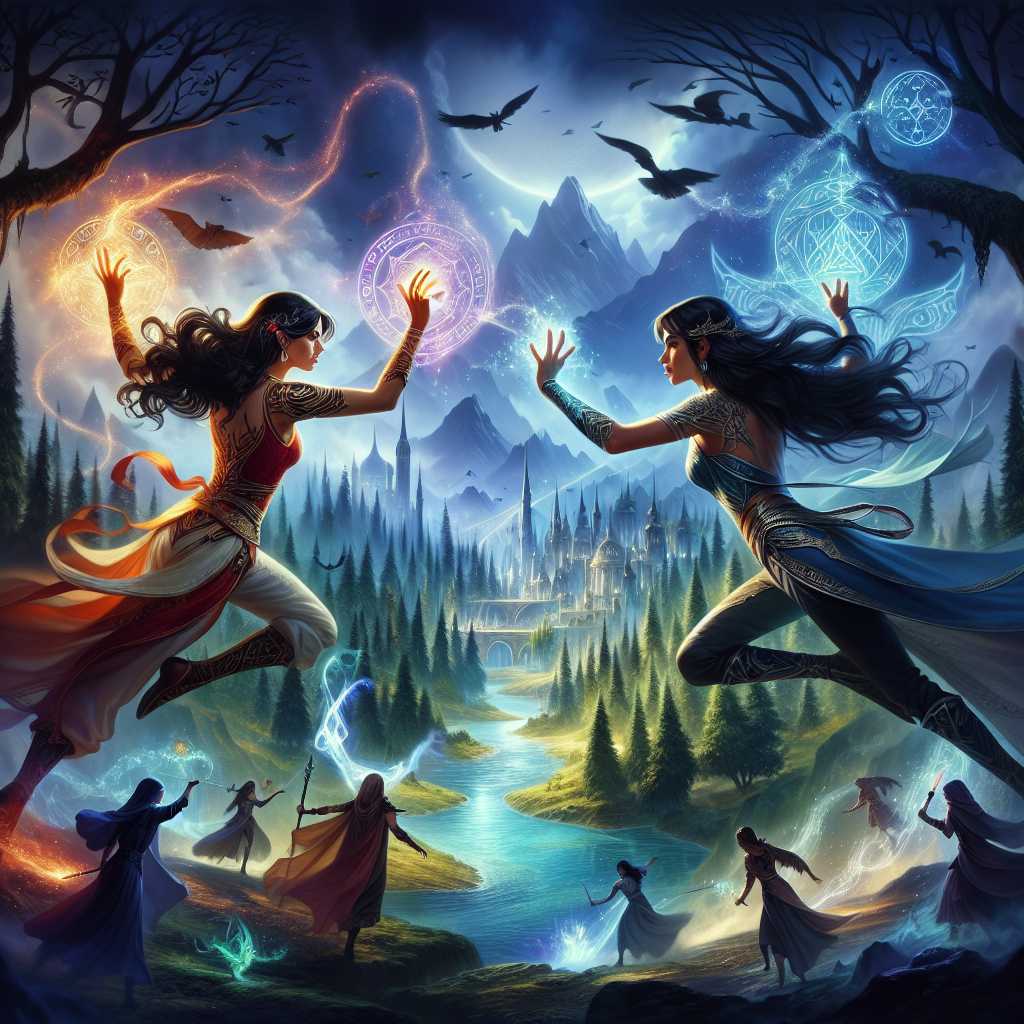
Under the canopy of a full moon, the bustling streets of Damascus in the year 1120 AD lay quieted by the thick blanket of night. The city, with its ancient alleys and cobblestone paths, held myriad stories concealed within the shadows cast by time. Deep in the heart of the city, a tale unfolded, carried forward by the whispers of the wind.
The Veil of the Dance – this was the tale that the old storytellers would recount with mystique and wonder. A story of love, intrigue, and the dance that transcended generations, echoing the pulse of a civilization engraved in history itself.
They say it began with a young girl named Amina, a spirit free as the desert's breeze, who resided amidst the towering walls of Damascus. Her family was humble, revered for their skill in crafting the most exquisite fabrics in all of the Levant. Her father, Salim, had woven for sultans and scholars, his hands guiding threads with a grace bestowed only by the ancient gods themselves.
Amina, with eyes the color of the river that nourished their land, would listen in awe to the tales of dancers who could captivate the entire city’s breath. Yet, it was her own spirit that danced with every tale told, every legend spun by her father and the storytellers who gathered by the flickering light of their hearth.
“One day,” Salim would say, his voice rich and warm, “you'll wear a veil spun from the stars, and your dance will tell the stories of those who came before you.”
Though the idea seemed but a dream to the young girl, destiny had its secret plans.
As years flowed like the Euphrates, Amina grew in beauty and in grace, much like the city itself. Her dance was inspired by the nomads' tales and the rhythm of the desert drums, captivating all who chanced upon her in the quiet splendor of early dawn or the soft dusk falling upon the city. Yet, it was not just her beauty or grace that entranced. It was the inherent spirit with which she moved, as if she carried within her the stories of every stone and soul of Damascus.
The bustling marketplace was but a tapestry of colors, smells, and sounds when a stranger arrived. His name was Amir, a wandering poet from Baghdad, and his heart was in search of stories as vivid as the sands he traversed. With words as silken as rose petals and eyes that mirrored the night sky, he sought the pulse of the city, eager to breathe life into his verses.
One quiet night, when the silver moon shared her light generously, Amir stumbled upon their home. He followed the whisper of a melody that floated through the air, settling like a gentle mist upon his senses. It was the music of Salim's loom entwined with the graceful movements of Amina's dance.
“It is as though she pulls the stars with each step,” Amir spoke, his words borne on the wings of wonder.
In that moment, a spark ignited between the poet and the dancer, a silent conversation that needed no language. It was an understanding forged in the precious metal of destiny.
Amina felt drawn to Amir's stories, and he to hers. Together, their hearts wove an intricate tapestry, mirroring the very fabric crafted by her family's skilled hands. But as with many tales where love blooms in the cradle of circumstance, theirs too faced the storm that tested their bond.
The whispers of love and newness echoed throughout Damascus, reaching the ears of rival artisans and those envious of Salim’s fame. In their jealousy, they sought to unravel the threads of happiness that Amina and Amir had spun.
One such envious soul spread rumors that Amina's dance was a spell, a bewitchment to lure men to their doom. Shadows grew around their once-bright union, and fear entwined itself like an insidious vine around their dreams.
A night came when Amina danced beneath the twilight sky, her tears hidden by the veil which was said to have been woven from the stars themselves. Amir watched, battling the currents of doubt planted by lies, questioning if her movements were mere enchantments or pure expressions of a heart bound to his own.
Yet, as her dance reached its peak, every story conveyed in her movements transcended mere perception, revealing the purity of her spirit and love for him. The truth shone in Amir’s eyes, scattering the clouds of deceit. Overcome by resolve, he took to the marketplace, using his words to unravel the lies, crafting poetry into shields to guard their tale.
Thus, the true story spread—of love's enduring grace, of envy tested, and of hearts too intertwined to sever by rumor or ill-will. The city listened, understanding that their tale was more than one of love, but that of the promises made beneath stars spun by storytellers, and the bright unity of kindred souls.
Years passed, and the memory of The Veil of the Dance remained etched in the soul of Damascus, a reminder of the strength of truth and the light that love could be. Amina and Amir’s legacy lived on, whispered through generations in the languid drawl of storytellers who gathered beneath the same gaze of the timeless moon.










